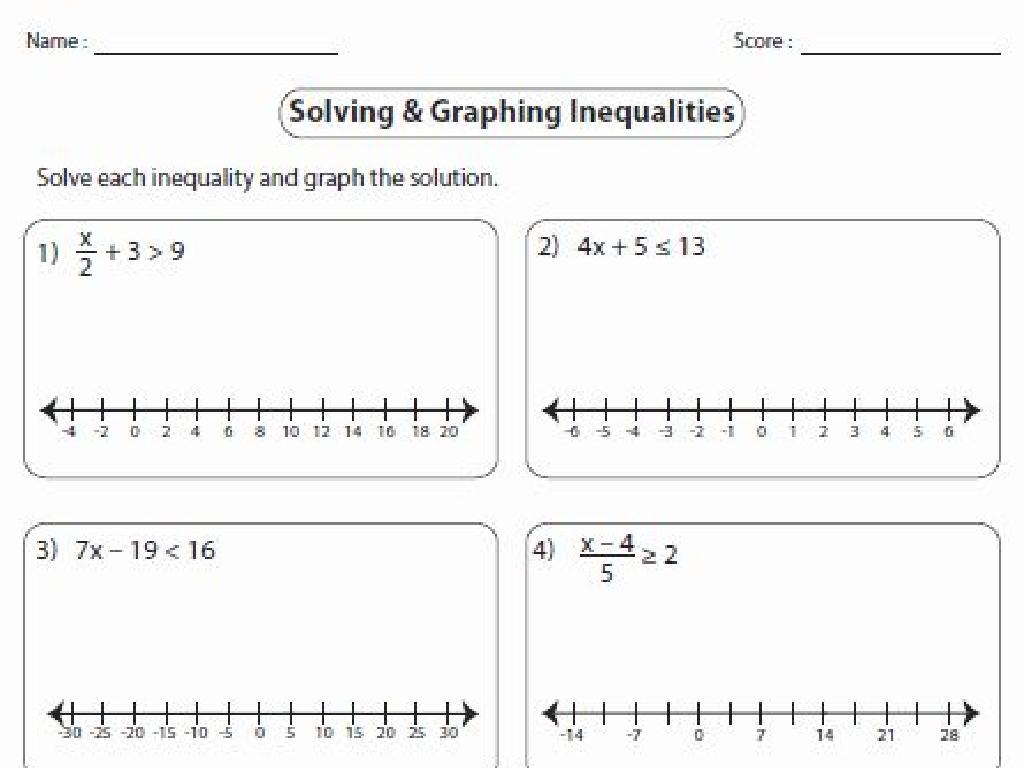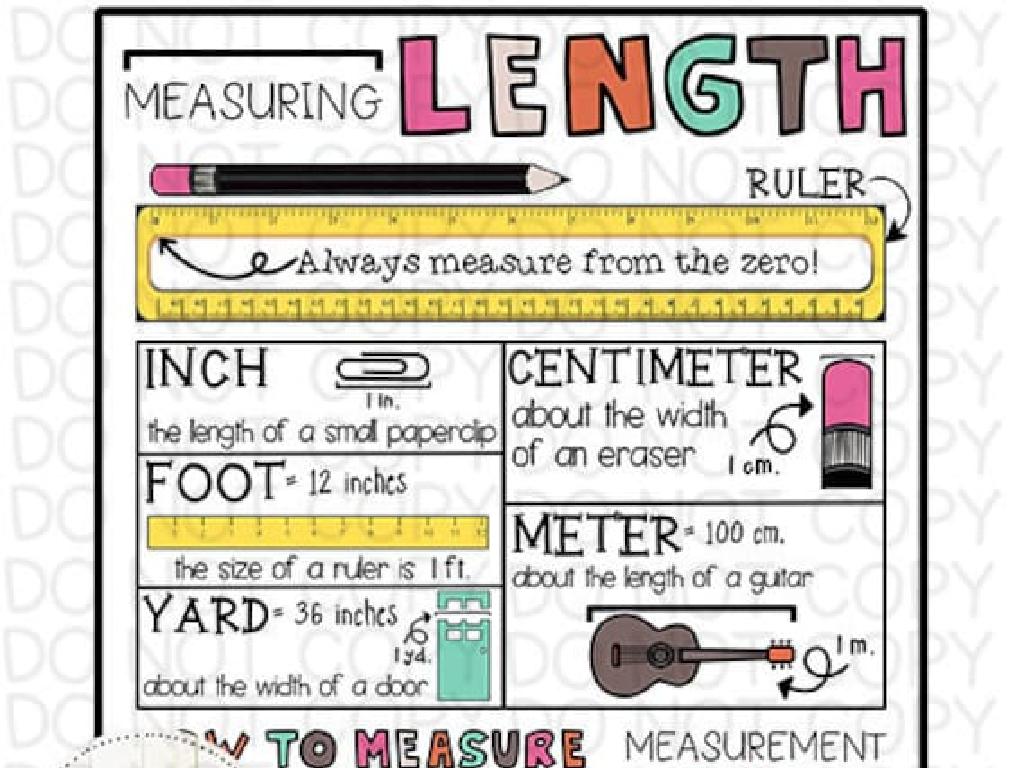Describe Energy Changes In Chemical Reactions
Subject: Science
Grade: Seventh grade
Topic: Chemical Reactions
Please LOG IN to download the presentation. Access is available to registered users only.
View More Content
Energy Changes in Chemical Reactions
– Understanding chemical reactions
– Reactions involve breaking and forming bonds
– The process of a chemical reaction
– Reactants change into products, releasing or absorbing energy
– Everyday examples of reactions
– Combustion in cars, photosynthesis in plants
– Observing energy changes
– Energy is either released (exothermic) or absorbed (endothermic)
|
This slide introduces students to the concept of chemical reactions, focusing on the energy changes that occur during these processes. Begin by explaining that chemical reactions involve the rearrangement of atoms, which includes breaking old bonds and forming new ones. Emphasize that this bond transformation is accompanied by energy changes. Provide relatable examples such as combustion in car engines, which releases energy, and photosynthesis in plants, which absorbs energy. Highlight the terms ‘exothermic’ and ‘endothermic’ to describe reactions that release or absorb energy, respectively. Encourage students to think of other everyday examples and consider whether those reactions release or absorb energy.
Understanding Energy in Chemical Reactions
– Energy: The ability to do work
– Energy’s various forms
– Thermal, chemical, electrical, and more
– Energy’s role in daily life
– Heating homes, powering devices
– Energy in chemical reactions
– Energy is absorbed or released during reactions
|
This slide introduces the concept of energy as it relates to chemical reactions. Begin by defining energy as the capacity to perform work, which is a foundational concept in science. Discuss the different forms of energy, such as thermal (heat), chemical (stored in bonds), and electrical (flow of electrons), and provide examples of each. Highlight how energy is integral to our daily lives, from heating our homes to powering various devices. Finally, explain that in chemical reactions, energy is either absorbed or released, which is crucial for understanding how substances interact and change. Encourage students to think of examples where they have observed energy changes, such as in cooking or when batteries run out of power.
Energy in Chemical Reactions
– Chemical reactions & energy change
– Exothermic reactions release energy
– e.g., combustion of wood
– Endothermic reactions absorb energy
– e.g., photosynthesis in plants
– Examples of energy changes
|
This slide introduces the concept that energy is a key component in chemical reactions, which can either release or absorb energy. Exothermic reactions, such as the combustion of wood, release energy, often in the form of heat or light. Endothermic reactions, like photosynthesis, require energy input to proceed. Students should understand that energy is conserved in these processes and the importance of these reactions in everyday life. Encourage students to think of more examples and to consider the energy changes that occur during those reactions.
Exploring Exothermic Reactions
– Characteristics of exothermic reactions
– Energy is released, often as heat or light, e.g., burning wood
– Real-life examples: combustion, respiration
– Combustion in engines, cellular respiration in our bodies
– Identifying exothermic reactions in equations
– Look for release of energy on the product side of a chemical equation
|
This slide introduces students to exothermic reactions, a type of chemical reaction that releases energy, usually in the form of heat or light. Key characteristics include temperature increase in the surroundings and the release of energy noted in chemical equations. Real-life examples help students connect the concept to everyday experiences, such as the combustion that powers vehicles and the respiration process in the human body. When identifying exothermic reactions in equations, students should look for energy terms on the product side, indicating that energy is being released as a result of the reaction. Encourage students to think of other examples they encounter daily and to practice writing and balancing chemical equations that represent exothermic reactions.
Exploring Endothermic Reactions
– Defining endothermic reactions
– Reactions that absorb heat from surroundings
– Photosynthesis: A natural example
– Plants absorb energy to convert CO2 and H2O into glucose
– Melting ice: A daily example
– Ice absorbs heat to transition from solid to liquid
– Recognizing endothermic reactions in equations
– Look for reactions where energy is on the reactant side
|
This slide introduces students to the concept of endothermic reactions, which are chemical reactions that absorb energy, typically in the form of heat, from their surroundings. Two relatable examples are provided: photosynthesis, where plants absorb sunlight to create food, and the melting of ice, a common occurrence that students can easily observe. To identify endothermic reactions in chemical equations, students should look for instances where energy is required as a reactant for the reaction to proceed. Encourage students to think of other examples of endothermic processes and to practice identifying them in written equations.
Energy Diagrams in Chemical Reactions
– Understanding energy diagrams
– Graphs showing energy changes during reactions
– Interpreting peaks and valleys
– Peaks represent high energy states, valleys are low energy states
– Exothermic vs. Endothermic reactions
– Exothermic releases heat, endothermic absorbs heat
– Comparing energy diagrams
– Observe differences in energy levels before and after reactions
|
This slide introduces students to the concept of energy diagrams, which are graphical representations of the energy changes that occur during chemical reactions. The peaks on these diagrams indicate points of high energy, typically representing reactants at an activated state, while valleys show points of lower energy, where products are more stable. Students will learn to distinguish between exothermic reactions, which release energy to the surroundings, and endothermic reactions, which absorb energy. By comparing different diagrams, students can visualize how energy is either absorbed or released in chemical reactions, reinforcing their understanding of energy changes in chemistry. Encourage students to practice drawing simple energy diagrams and to use them as tools for predicting the behavior of chemical reactions.
Energy and Chemical Reactions
– Energy: Neither created nor destroyed
– Energy transforms during reactions
– Reactants absorb/release energy, forming products with different energy levels.
– Applying conservation to equations
– Balance chemical equations considering energy involved.
– Observing energy in experiments
– Perform experiments to see energy changes, like heat or light emission.
|
This slide introduces the Law of Conservation of Energy within the context of chemical reactions. It’s crucial for students to understand that in a closed system, the total energy before and after a chemical reaction remains constant; energy is conserved. They should learn that energy can change forms, such as from potential to kinetic energy during a reaction. When applying this law to chemical equations, students should consider the energy content of reactants and products to understand the reaction’s energetics. Encourage students to think about real-life examples, such as the energy released when burning fuel. In-class experiments can include mixing chemicals that either absorb heat (endothermic) or release heat (exothermic) to visually demonstrate energy transformation.
Class Activity: Observing Exothermic Reactions
– Conduct an exothermic reaction experiment
– Measure temperature changes
– Use a thermometer to record the temperature before and after the reaction
– Discuss observations
– Relate observations to energy changes
– Understand that exothermic reactions release heat, increasing temperature
|
In this class activity, students will conduct a simple experiment to observe an exothermic reaction, such as mixing baking soda with vinegar. Provide each student or group with the necessary materials and a thermometer to measure the temperature before and after the reaction. After conducting the experiment, lead a discussion on their observations, focusing on the temperature change as evidence of energy release. Explain that in exothermic reactions, the chemical bonds formed in the reaction products release more energy than was required to break the bonds in the reactants, resulting in a net release of energy as heat. This activity will help students to visually and tangibly understand the concept of energy changes in chemical reactions. Possible variations of the activity could include combining hydrogen peroxide with yeast or dissolving calcium chloride in water.
Energy in Chemical Reactions: Recap & Preview
– Recap: Energy changes in reactions
– Chemical reactions involve energy being absorbed or released.
– Understanding energy’s role
– Energy is fundamental in scientific phenomena.
– Why energy knowledge is key
– Grasping energy concepts aids in comprehending various scientific principles.
– Up next: Reaction rates
– We’ll explore how different factors affect the speed of chemical reactions.
|
This slide aims to consolidate the students’ understanding of how energy is involved in chemical reactions, emphasizing that reactions either absorb or release energy. Highlight the importance of energy in science, as it is a key concept that underpins many scientific processes and phenomena. Make sure students understand that a firm grasp of energy changes is crucial for further studies in science. Finally, give a brief introduction to the next lesson on reaction rates, preparing them for understanding how different variables can affect how quickly reactions occur. Encourage students to think of questions or predictions about what might influence reaction rates.





